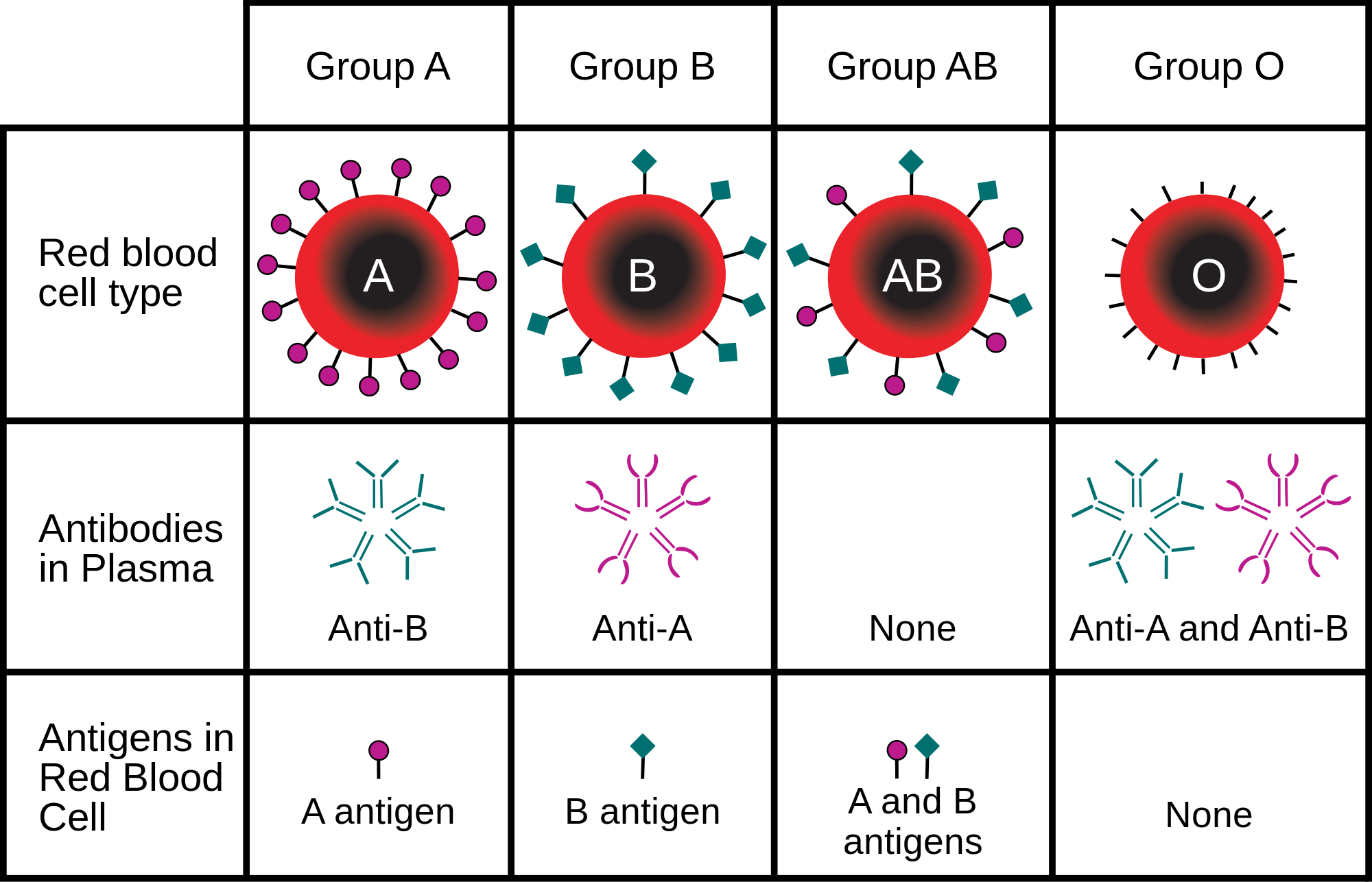

Since differences in blood types do not lead to illnesses, people can pass on their genes both in the case that the ABO protein is active and produces blood types B, A or AB, as well as in case it is inactive, producing type O blood. The different blood type alleles are passed down from generation to generation, with every person receiving one allele from his mother and another from his father, and they can be either similar or different. Over time, this process may result in a slightly higher prevalence of O alleles. Although the chances of a mutation occurring specifically in the ABO gene that will be passed onto the next generation is low, the probability that a random mutation will impair a working protein and disrupt its activity is higher than that of a random mutation returning a nonfunctional protein back to functionality.

In such a manner, a large number of different abnormal versions of the gene may appear, all of which will result in type O blood and spread in the population. In contrast, in genes that are not essential for our survival, such as the ABO gene, ‘abnormal’ versions can appear and remain in the population. If the mutations are harmful, they will be unlikely to spread throughout the population and will most likely disappear with time, through the process of natural selection. Most of these changes are insignificant, but some can be harmful and a very small fraction can even be beneficial. Over generations, random mutations - changes in the DNA sequence - occur in our genes. However, slight differences could be present in the gene that harbors the instructions for its production. Blood types A and B also have several variants, in all of which the functional protein produces the appropriate sugar molecule. In one person the protein may be too short, while in another it will not function due to a change in its structure that renders it unfunctional. There could be many reasons why the protein that adds the sugar molecules is inactive in a person with type O blood. In certain countries it can be found in about 90 percent of the population, while in other places it will only be present in about a half of the population.Įven if two people have the same blood type, they do not necessarily have the same alleles. The prevalence of the different blood types in the population is unequal, and the most common blood type is type O. Slightly different versions of the gene, termed ‘alleles’, will determine whether the blood will be of type A, type B, both or neither. The ABO gene harbors the instructions for the production of a protein that adds one of the aforementioned sugar molecules to the surface of red blood cells. That is why it is imperative to adjust the donor blood type to the recipient’s blood type.īlood types are inherited from parents to children by the ABO gene, with one copy being provided by the mother and the other by the father. For example, if a person with Type O blood receives a type A blood donation, his body will recognize the sugar molecules of type A blood as foreign, consider the donor red blood cells as invaders and attack them. The human immune system recognizes these sugar molecules and, upon encountering a sugar molecule different from the type regularly present in the body, treats it as a foreign element that should be attacked.

Red blood cells that display both types of sugar molecules on their surface are termed type AB blood cells, while cells that do not display either sugar molecule are termed Type O blood cells. Red blood cells that present sugar molecules of a certain type are termed Type A blood cells, while red blood cells that present another type of sugar molecule are termed Type B blood cells. Humans have several blood types, or blood groups, which differ according to the types of sugar molecules present on the surface of the respective red blood cells.


 0 kommentar(er)
0 kommentar(er)
